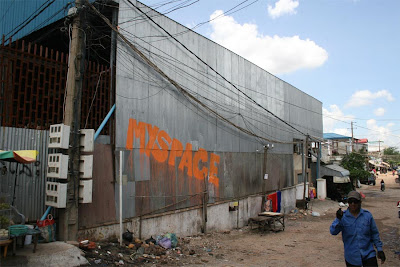When I consider how my light is spentIf he couldn't make maximum use of his gift, Milton felt he would not be able to present a "true acount" of himself to his maker.
E're half my days, in this dark world and wide,
And that one Talent which is death to hide,
Lodg'd with me useless, though my Soul more bent
To serve therewith my Maker, and present
My true account...
The artist Noel Sickles was not able to use his own talent when he worked as a ghost artist for the comic strip Scorchy Smith. He had to conceal his ability in order to earn a steady living imitating the awful drawings of cartoonist John Terry.

Sickles recalled the pain of deliberately doing bad work in order to make money:
Have you ever seen John Terry's work?.... I had to forget everything I learned about drawing -- absolutely everything -- because it was the worst drawing I had ever seen by anybody. Your children do better drawings than John Terry.... But it took time to copy that horrible style, you know.After Sickles escaped from the shadow of John Terry, he was able to flex his own muscles, develop his own talent and begin doing great work like this:

Artist Frank Frazetta had a similar experience. He earned a steady living as the ghost artist for Al Capp's comic strip, Li'l Abner:

Frazetta later recalled the the soul-numbing effect of drawing under the weight of Capp's mediocre formula:
"I shouldn't have done it, " Frank confesses, "but I was lazy.... came along and made me an offer I couldn't refuse. The pay was wonderful and it took me only a day to pencil his Sunday page and I had the rest of the week off! What more could I ask for? On a couple of occasions I went up to his Boston studio and he paid me $100 a day, which was really big money back then." Frazetta worked for Capp for the better part of eight years, burying his own style under that of his employer.... Frank devoted his full attention to Li 'l Abner.... "Because of Capp's strong style of drawing, I had all but lost all the things I had learned and developed on my own," states Frank. " I had to get away." (Even after a year away from Capp, his own work looked awkward).After he cast off the straightjacket of Li'l Abner, Frazetta developed astonishing artistic gifts that dwarfed those of Capp:

Time and again, gifted artists have subordinated their true talent in exchange for a regular paycheck.
Illustrator Bernie Fuchs was commercially successful working on car brochures in Detroit, where he painted happy couples standing next to fancy cars. Fuchs worked in a large studio for a boss who promised, " if you stay with me, I guarantee I will make you the richest illustrator in all of Detroit." The work was safe and lucrative, but Fuchs knew he was capable of more. A friend recalls,
All the local art directors kept calling up saying, I want Bernie! I want Bernie! But Bernie got tired of doing pictures of people holding drinks and just said, "shove it."He gambled everything and broke away to work independently in New York. There, he encountered a wider range of challenges and was able to make use of his talents to their fullest.

His gamble paid off. Within just a few years, Fuchs was at the White House meeting with President Kennedy to paint his portrait. He had a long, exciting career filled with experiences he would never have encountered in Detroit.
Not every story had such a happy ending. Artist Don Trachte worked for years behind the scenes on Carl Anderson's mediocre comic strip, Henry. When Anderson died in 1948, Trachte stepped into Anderson's shoes and continued to make identical drawings following the same mindless formula for another 40 years.

As Shakespeare wrote,
There is a tide in the affairs of men
Which taken at the flood leads on to fortune
Omitted, all the voyage of their life
Is bound in shallows and miseries.


























